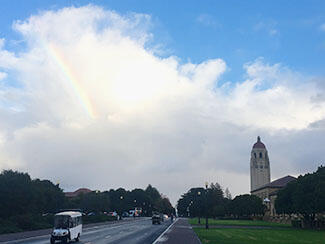
Research and development towards a hard x-ray cavity-based free electron laser
Spilker 232 and Remote via Zoom
Abstract: X-ray free-electron lasers (XFELs) have become essential tools for the investigation of dynamical systems as they have the ability to operate on the time and length scales natural to atomic and electronic motion in matter. These facilities are largely based on single-pass self-amplified spontaneous emission (SASE) and result in transversely coherent x-ray pulses with stochastic temporal and spectral structures. The realization of a true x-ray laser, one that generates fully coherent and stable x-ray beams, will drive another qualitative advance for many areas of science. In this talk, I will give a brief history of the FEL, discuss their basic operating principles, and provide an overview of an R&D program aimed at unlocking their true potential.
Bio: Dr. Gabriel Marcus received his Ph.D. from UCLA in 2012 where he primarily focused on the production and measurement of ultra-short FEL pulses using electron beam phase space manipulation techniques and advanced optical diagnostics. He worked as a postdoctoral fellow first at Lawrence Berkeley National Laboratory on the design and optimization of the Next Generation Light Source FEL beamlines and then at SLAC on advanced FEL concepts for LCLS. Currently, he is a Lead Scientist at SLAC in the FEL and Beam Physics Theory Group where he studies and implements advanced FEL techniques for LCLS and LCLS-II. He is the PI of the Cavity-Based X-ray Free-Electron Laser R&D project, which is a joint SLAC, ANL, and RIKEN SPring-8 project aimed at enabling cavity-based XFEL techniques at high-repetition rate FEL facilities.
This seminar is sponsored by the Department of Applied Physics and the Ginzton Laboratory.